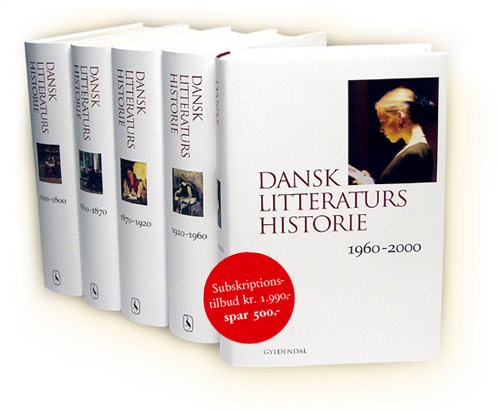 This afternoon we had a visit from three people involved in Gyldendal's new comprehensive Danish Literary History, a 5-volume work stretching from 1100 to 2000 AD. Critic May Schack and Professor Klaus P. Mortensen represented the editorial side of the effort, while Lasse Horne Kjældgaard was on hand to tell about writing some of the entries themselves.
This afternoon we had a visit from three people involved in Gyldendal's new comprehensive Danish Literary History, a 5-volume work stretching from 1100 to 2000 AD. Critic May Schack and Professor Klaus P. Mortensen represented the editorial side of the effort, while Lasse Horne Kjældgaard was on hand to tell about writing some of the entries themselves.
In the US the issue of Nordic literary history has gotten a breath of fresh air with the effort to write a "History of Nordic Literary Cultures" along the lines of the successful Latin American effort. Steven Sondrup and Mark Sandberg, two American academics, have presented their work on this project at the last few SASS and IASS. The "Literary Cultures" projects are in a way set in opposition to more traditional reference works such as the Gyldendals volumes we heard about today, together with the Dictionary of Literary Biography. Briefly, the project seeks to break with biographical and/or chronological rubric and instead organize knowledge around the intersections instead. In this strategy, Copenhagen becomes a geographic node that contains a history of the importance of Danish theater for Norwegian and Swedish playwrights, just as 1905 becomes a temporal node with a special resonance for Norwegian literary culture. I don't know if there will be "no article on Strindberg" in the final product, but it's safe to say that the project seeks to move past the great man theory of literature
Having said that, the three Danes we met today made a spirited defense of individual authorship as the foundation of their approach, especially given the intended audience of the Gyldendal work. An interesting aspect to their approach lies in the eksemplariske princip (exemplary principle), wherein citations from each authors' works are included in the biographical discussion. In this way the Historie seeks to be "demonstrerende, ikke kun postulerende" (demonstrating, not just postulating.) They assign a high value to usability (anvendelighed) and see the historic progression of authors in each volume as the simplest way to reach readers in an intuitive manner -- and perhaps, through the use of thematic essays and cross-references, lead the reader to connections he or she had not previously considered.